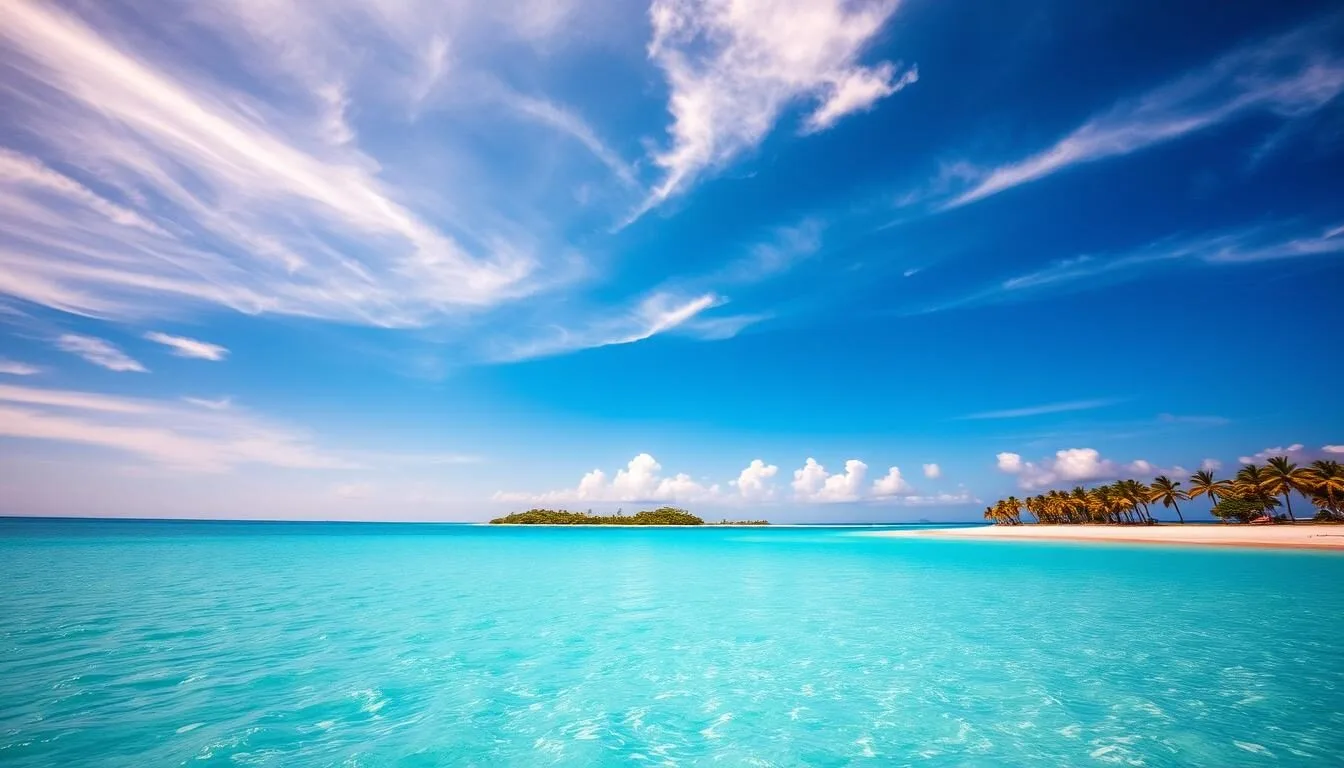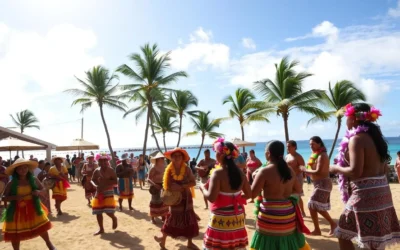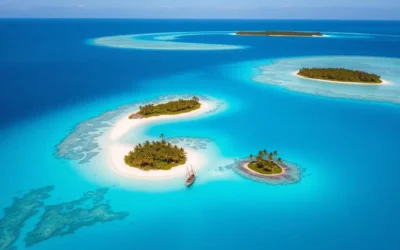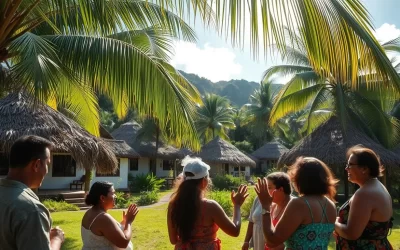✓ Accommodations✓ Flights✓ Rental Cars
Did you know that Tokelau, a small Pacific territory, experiences a unique tropical climate that can significantly impact your travel experience? With limited transportation options to this remote destination, timing your visit right is crucial to making the most of your trip.
Understanding the weather patterns throughout the year is essential to planning a weather-savvy trip. The tropical climate creates distinct seasonal patterns that can affect your travel plans, from temperature fluctuations to rainfall distribution and wind conditions.
By identifying the best time to visit based on your preferred activities and comfort levels, you can maximize your experience in this Pacific paradise. Whether you’re interested in water activities, cultural experiences, or simply enjoying the pristine beaches, this guide will help you make informed decisions about when to plan your Tokelau adventure.
Understanding Tokelau’s Tropical Climate
Tokelau experiences a tropical climate with minimal seasonal variation throughout the year. This consistency is a hallmark of equatorial regions, making Tokelau an attractive destination for travelers seeking warm weather year-round.
Geographic Location and Its Impact on Weather
Tokelau’s geographic location near the equator significantly influences its climate. The atoll’s proximity to the equator means it receives a relatively constant amount of solar radiation throughout the year, contributing to its stable temperature patterns.
Year-Round Temperature Patterns
The temperature in Tokelau varies minimally throughout the year, with average highs ranging from 85°F to 86°F and lows around 80°F. Key aspects of Tokelau’s temperature patterns include:
- Consistent temperatures with minimal seasonal variation.
- Average daytime temperatures between 82-88°F (28-31°C).
- Nighttime temperatures rarely below 75°F (24°C).
- The warmest period is between November and April.
- May through October is slightly cooler, with a modest 2-3°F difference.
- No need to pack different clothing for different seasons.
- Water temperatures remain warm, between 82-84°F (28-29°C), year-round.
While temperature variation is minimal, your comfort may be affected by humidity and wind conditions, which fluctuate more noticeably throughout the year.
Tokelau’s Distinct Seasons
Tokelau experiences two distinct seasons that significantly impact the islands’ climate and activities. Understanding these seasons is essential for planning your trip and making the most of your time on the islands.
Dry Season: April to October
The dry season in Tokelau, spanning from April to October, is characterized by lower humidity and reduced rainfall. During this period, the islands enjoy more stable and pleasant weather conditions, making it an ideal time for outdoor activities. You can expect clearer skies and less rain, creating perfect conditions for exploring the islands.
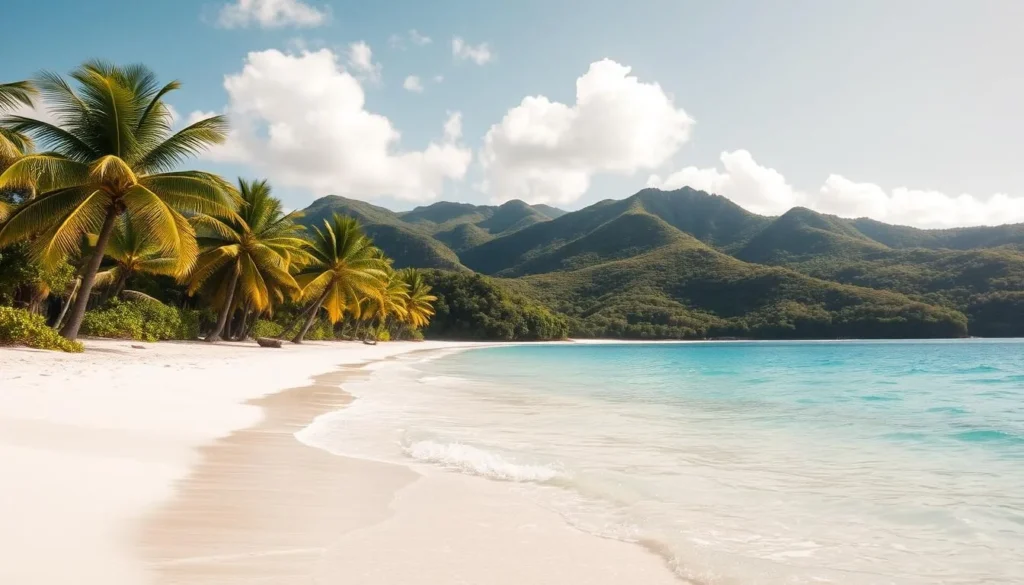
Wet Season: November to March
In contrast, the wet season, from November to March, brings increased rainfall and higher humidity to the islands. Although it tends to rain heavily, the downpours are usually brief. The conditions during this time can be quite vibrant, with lush vegetation and abundant fresh fruit. Despite the rain, you can still enjoy various activities between showers.
| Season | Characteristics | Best For |
|---|---|---|
| Dry Season (April-October) | Lower humidity, less rainfall | Outdoor activities, island exploration |
| Wet Season (November-March) | Higher humidity, increased rainfall | Indoor cultural activities, enjoying lush vegetation |
Tokelau: Best Months for a Weather-Savvy Trip
Understanding Tokelau’s weather patterns is key to planning a successful and enjoyable trip. The atoll’s tropical climate means that weather conditions vary throughout the year, impacting the quality of your travel experience.
Prime Visiting Window: May to September
The period from May to September is considered the prime visiting window for Tokelau. During these months, the weather is generally dry and sunny, making it ideal for outdoor activities such as snorkeling, diving, and exploring the atoll’s pristine landscapes. With relatively low rainfall, this period offers the best conditions for enjoying Tokelau’s natural beauty.
Key advantages of visiting during this time include:
- Favorable weather conditions for outdoor activities
- Lower risk of rainfall impacting your plans
- Optimal conditions for enjoying Tokelau’s beaches and landscapes
Shoulder Seasons: April and October
For travelers with flexible plans, April and October serve as Tokelau’s shoulder seasons, offering a good balance between favorable weather and other travel considerations. April typically sees decreasing rainfall as the wet season ends, while October experiences increasing precipitation as the wet season begins.
| Month | Rainfall (inches) | Weather Conditions |
|---|---|---|
| April | Decreasing | Increasingly stable with occasional rain showers |
| May | Low | Dry and sunny |
| October | Increasing | Plenty of sunny days with occasional brief rain showers |
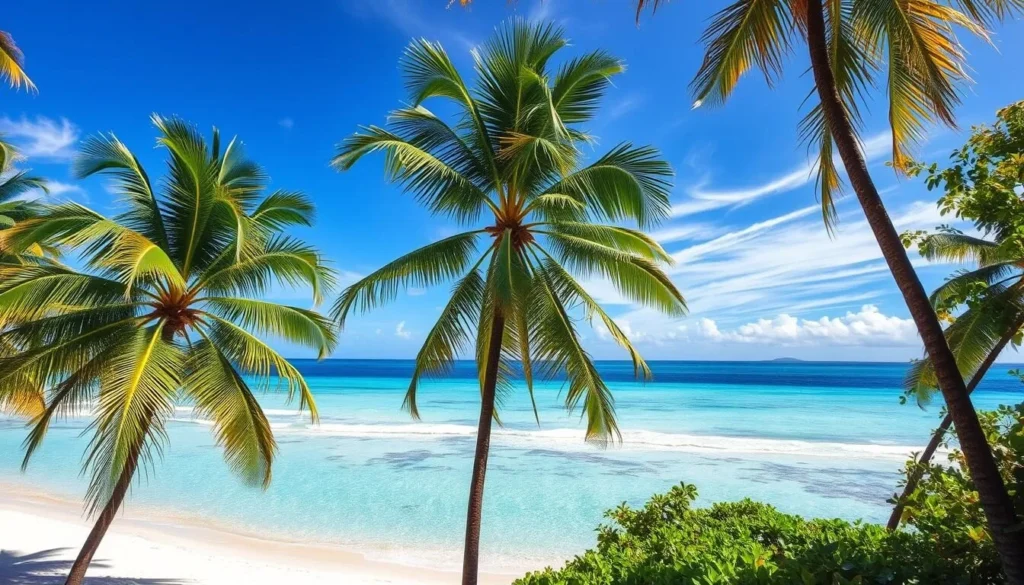
These shoulder periods can be ideal for travelers who can adjust their daily activities based on weather conditions, potentially benefiting from fewer visitors and more authentic cultural experiences.
Rainfall Patterns Throughout the Year
Understanding rainfall patterns is crucial for planning a trip to Tokelau. The atolls experience a distinct wet and dry season, which significantly impacts the weather and activities throughout the year.
Wettest Months: December to February
The period from December to February is characterized by the highest rainfall in Tokelau. During these months, the atolls experience heavy tropical rainfall, with February typically being one of the wettest months. Although the Marshall Islands have their dry season during this time, Tokelau’s weather pattern differs. The rainfall during this period can impact outdoor activities, but it also results in lush vegetation and a vibrant ecosystem.
The wettest months are ideal for experiencing Tokelau’s natural beauty, with full vegetation and replenished water sources. However, it’s essential to plan accordingly, as some outdoor activities might be limited due to the rain.
Driest Months: June to August
In contrast, the months of June, July, and August represent the driest period in Tokelau’s annual weather cycle. During this time, the average rainfall drops significantly, making it ideal for weather-dependent activities. July often emerges as the single driest month, with minimal precipitation.
- The reduced rainfall during these months leads to clearer skies and more comfortable conditions for exploring the atolls.
- Better visibility in the surrounding lagoons and ocean makes these months prime time for snorkeling and underwater photography.

| Month | Average Rainfall (inches) | Number of Rainy Days |
|---|---|---|
| June | 6-8 | 8-12 |
| July | 5 | 8-10 |
| August | 6-8 | 8-12 |
Sunshine and Cloud Cover by Month
Understanding the patterns of sunshine and cloud cover in Tokelau can help you plan your trip more effectively. The island’s tropical climate means that these factors significantly impact the overall experience throughout the year.
Clearest Skies: May to September
The period from May to September is characterized by the clearest skies in Tokelau. During these months, you can expect an average of 7-9 hours of direct sunshine daily. The clear conditions make it ideal for outdoor activities such as snorkeling, diving, and simply enjoying the beautiful beaches. The dry season, which coincides with these months, results in lower humidity levels, making the weather even more comfortable.
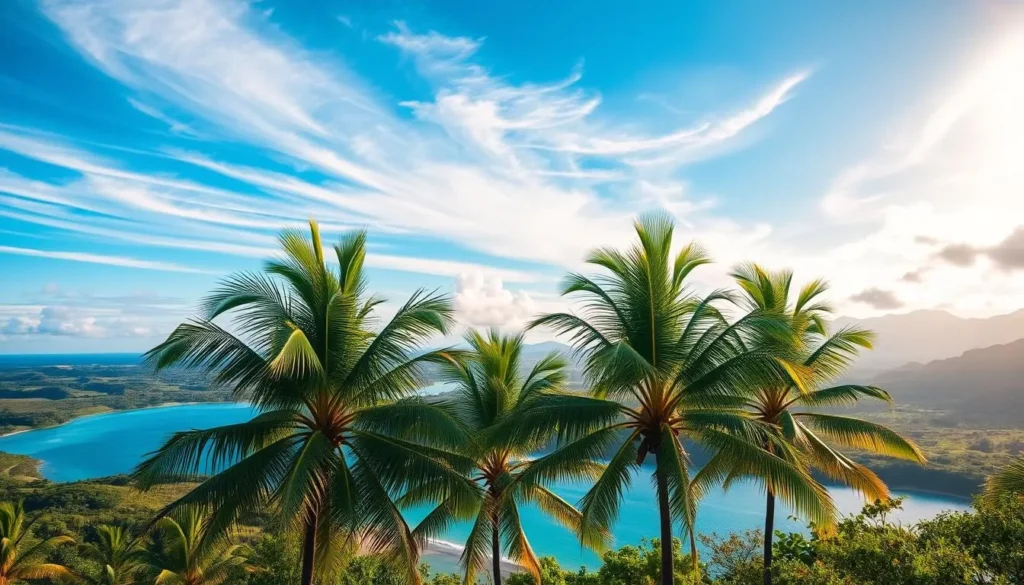
Overcast Periods: November to March
In contrast, the period from November to March marks Tokelau’s most overcast period, with cloud cover averaging 70-80% throughout these months. You can expect more diffused sunlight and fewer hours of direct sunshine, typically 5-7 hours daily. Despite the increased cloudiness, temperatures remain warm and relatively stable. The overcast conditions can actually create more comfortable daytime temperatures by reducing direct sun exposure, though humidity levels are higher. These months offer unique photographic opportunities with dramatic cloud formations and soft, diffused light ideal for portrait photography.
Wind Conditions and Their Seasonal Variations
As you plan your trip to Tokelau, it’s essential to consider the seasonal wind variations that significantly impact your island experience. Understanding these wind patterns can help you make the most of your water activities and overall travel plans.
Trade Wind Patterns
Tokelau is influenced by southeast trade winds, which are at their strongest from June to August. During these months, the average wind speed ranges from 12-18 knots (14-21 mph), with occasional gusts reaching 25 knots (29 mph). These wind conditions create choppier seas around the atolls, particularly on the eastern (windward) shores.
Calm Periods vs. Windier Months
The calmer period, lasting 5.2 months from June 21 to November 27, offers a more tranquil experience. September is the calmest month, with an average hourly wind speed of 9.4 miles per hour. During these months, the reduced wind creates glassy, tranquil waters, ideal for snorkeling, diving, and other water activities. However, the lighter winds coincide with the peak of the wet season, presenting a trade-off between calm seas and increased likelihood of rain showers.
| Month | Average Wind Speed (mph) | Conditions |
|---|---|---|
| June | 15 | Windy |
| July | 16 | Windy |
| August | 17 | Windy |
| September | 9.4 | Calm |
| October | 10 | Calm |
For travelers planning water-based activities, understanding these wind patterns is essential. Morning hours are generally calmer regardless of season, making early excursions preferable for activities like snorkeling or lagoon tours.
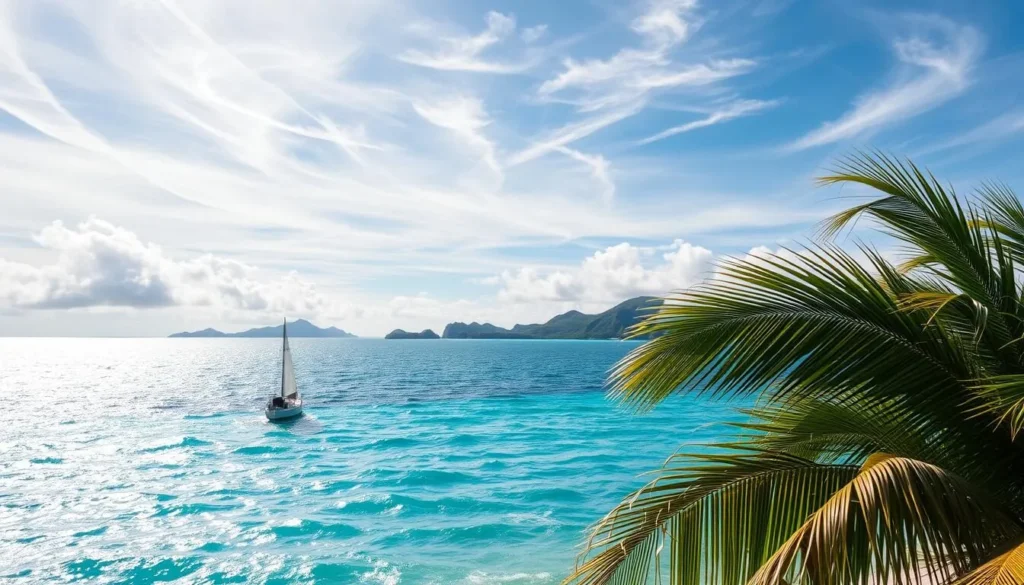
Water Temperature and Ocean Activities
The crystal-clear waters of Tokelau offer a paradise for ocean enthusiasts, with water temperatures and activities varying throughout the year. Whether you’re interested in swimming, snorkeling, or diving, understanding the ocean conditions will help you make the most of your trip.
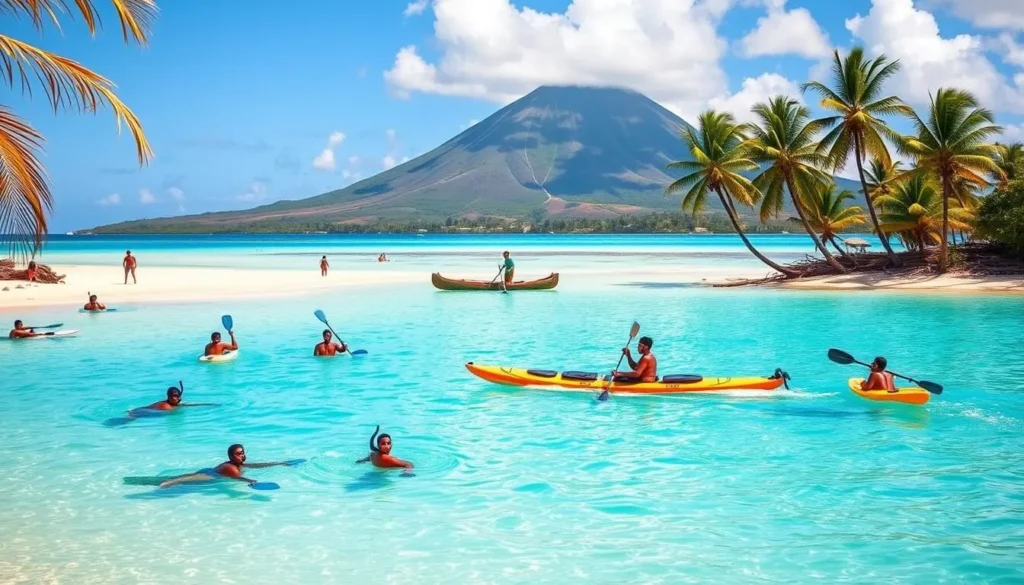
Best Months for Swimming and Snorkeling
The warm waters of Tokelau are perfect for swimming and snorkeling year-round, with temperatures ranging from 82-84°F (28-29°C). The best time for these activities is during the dry season, from April to October, when the waters are calmer and visibility is at its peak. Snorkelers can enjoy the vibrant coral reefs and abundant marine life, making for an unforgettable experience.
- Calm waters during the dry season enhance the snorkeling experience.
- Abundant marine life and healthy coral reefs.
- Warm water temperatures make swimming comfortable year-round.
Diving Conditions Throughout the Year
Diving in Tokelau is a year-round activity, with conditions varying by season. The prime diving period is from June to September, when underwater visibility exceeds 80 feet on the outer reef slopes. While the wet season brings reduced visibility due to runoff and plankton blooms, it also offers calmer wind conditions in December and January, making for smoother boat entries and exits.
- Peak diving visibility from June to September.
- Calm wind conditions during the wet season in December and January.
- Healthy hard coral reefs and abundant reef fish.
Humidity Levels and Comfort Factors
When planning your visit to Tokelau, it’s essential to consider the humidity levels to make the most of your trip. Tokelau’s tropical climate means that humidity is a significant factor in determining comfort levels throughout the year.
Managing High Humidity
Managing high humidity is crucial for a comfortable experience in Tokelau. The humidity is relatively high throughout the year, but there are strategies to make your trip more enjoyable. For instance, staying hydrated and planning your outdoor activities during the cooler parts of the day can make a significant difference. The dry season, which spans from April to October, offers relatively lower humidity levels, making it a more comfortable period for outdoor activities.
Most Comfortable Periods for Outdoor Activities
The most comfortable period for outdoor activities in Tokelau is from June to September. During these months, the combination of slightly lower temperatures (averaging 82-84°F or 28-29°C) and reduced humidity (75-80%) creates ideal conditions for active pursuits. 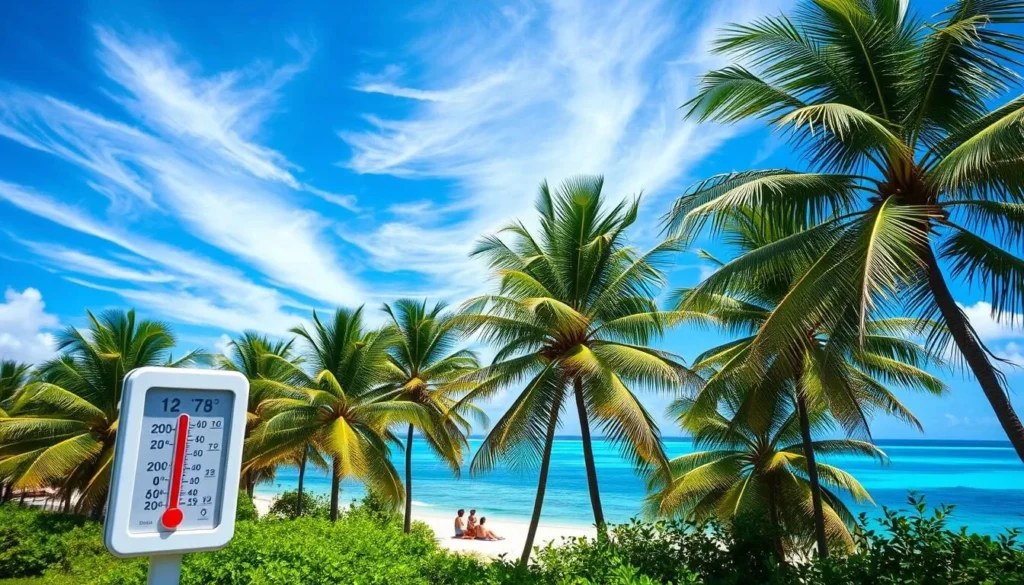 The consistent trade winds during this period provide natural cooling, making even midday activities more bearable. July and August are particularly comfortable, with the dry season in full effect and humidity at its annual minimum.
The consistent trade winds during this period provide natural cooling, making even midday activities more bearable. July and August are particularly comfortable, with the dry season in full effect and humidity at its annual minimum.
For visitors not accustomed to tropical climates, this period provides a gentler introduction to Tokelau’s weather, making it ideal for first-time visitors. Even during this most comfortable period, sun protection remains essential due to Tokelau’s proximity to the equator and the consistently high UV index.
Planning Around Daylight Hours
Tokelau’s consistent daylight pattern offers a unique advantage for travelers planning their activities. With around 12 hours of daylight throughout the year, you can plan your day without significant adjustments for daylight changes.
Sunrise and Sunset Patterns
The sunrise and sunset patterns in Tokelau are relatively consistent, allowing you to plan your day according to the natural rhythm of the islands. Rising with the early sunrise and concluding major activities by sunset is a common practice among visitors.
Maximizing Daylight for Activities
To make the most of your time in Tokelau, aligning your daily schedule with the natural daylight patterns is highly recommended. Here’s a suggested daily plan:
| Time | Activity | Conditions |
|---|---|---|
| 6:00-9:00 AM | Outdoor activities like hiking, swimming, or snorkeling | Coolest temperatures and calmest winds |
| 10:00 AM-2:00 PM | Lunch, cultural indoor activities, or midday rest | Most intense sun and heat |
| 3:00-6:00 PM | Outdoor activities and photography | Moderate temperatures and spectacular lighting |
| After 6:00 PM | Community gatherings, traditional performances, or stargazing | Limited artificial lighting |
By following this schedule, you can maximize your comfort and productive activity time during your trip. Remember to schedule your most energy-intensive activities for the morning hours and save more relaxed pursuits for the afternoon.
Best Months for Specific Activities
When planning your trip to Tokelau, understanding the best times for various activities can significantly enhance your travel experience. The island’s climate and cultural calendar offer a range of opportunities for both beach activities and cultural exploration.
Optimal Times for Beach Activities
The dry season, from April to October, is considered the best time for beach activities in Tokelau. During these months, you can enjoy:
- Calm seas, ideal for swimming and snorkeling
- Clear skies, perfect for sunbathing and outdoor activities
- Favorable conditions for fishing and water sports
May to September stands out as the prime period, offering a great balance of good weather and fewer crowds.
Ideal Periods for Cultural Exploration
For those interested in cultural exploration, Tokelau offers unique experiences throughout the year. The shoulder seasons of April-May and September-October provide a good balance between favorable weather and authentic cultural experiences. You can:
- Participate in local events like Gospel Day in May
- Observe traditional fishing practices during the dry season
- Engage with the community during village meetings
Approaching cultural exploration with respect and flexibility will enhance your experience and connections with the Tokelauan people.
Weather Considerations for Island Hopping
When island hopping in Tokelau, understanding the weather considerations is crucial for a smooth trip. The weather can significantly impact your travel plans, especially when moving between atolls.
Inter-Atoll Travel and Weather Impacts
The boat service connecting Tokelau’s atolls operates on a semi-regular schedule, but it’s always subject to weather conditions. This means that delays are common, even in good weather. To mitigate this, it’s recommended to build in at least 2-3 flexible days for each inter-atoll transfer. The best time for inter-atoll travel is during the dry season, from June to August, when transportation is most reliable.
Planning Multi-Island Itineraries
When planning your multi-island itinerary, consider visiting the most distant atoll first, usually Atafu, and then work your way back to Fakaofo. A typical multi-island visit requires at least 10-14 days to reasonably experience all three atolls. For a more comprehensive experience, aim to spend at least 3-4 days on each atoll. If your schedule is tight, focusing on one or two atolls is preferable to rushing between all three, as transportation uncertainties can significantly impact limited timeframes.
Conclusion: Making the Most of Your Tokelau Visit
With its remote location and distinct weather patterns, Tokelau rewards travelers who plan their visits with care. Understanding the best time to visit can significantly enhance your travel experience on these unique islands.
The dry season, from June to September, is considered the best time to visit Tokelau for most travelers, with July and August offering the optimal balance of favorable weather conditions. If you’re primarily interested in water activities and beach time, the heart of the dry season (June-August) provides the most reliable conditions with clear waters and minimal rainfall.
Cultural explorers might find the shoulder seasons (April-May and September-October) most rewarding, offering good weather with fewer visitors and more authentic experiences. Regardless of when you visit, packing appropriately for Tokelau’s tropical climate is crucial. This includes lightweight, breathable clothing, robust sun protection, rain gear, and water-friendly shoes for coral beaches.
By timing your trip to align with your priority activities and preparing for Tokelau’s climate, you’ll maximize your experience in this truly unique Pacific destination. Embracing flexibility and adapting to local conditions will make for the most rewarding travel experience in this off-the-beaten-path paradise, making your visit ideal.
The above is subject to change.
Check back often to TRAVEL.COM for the latest travel tips and deals.
